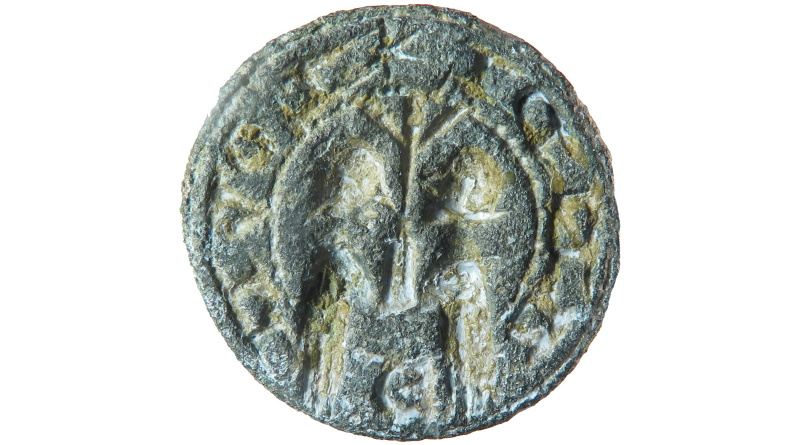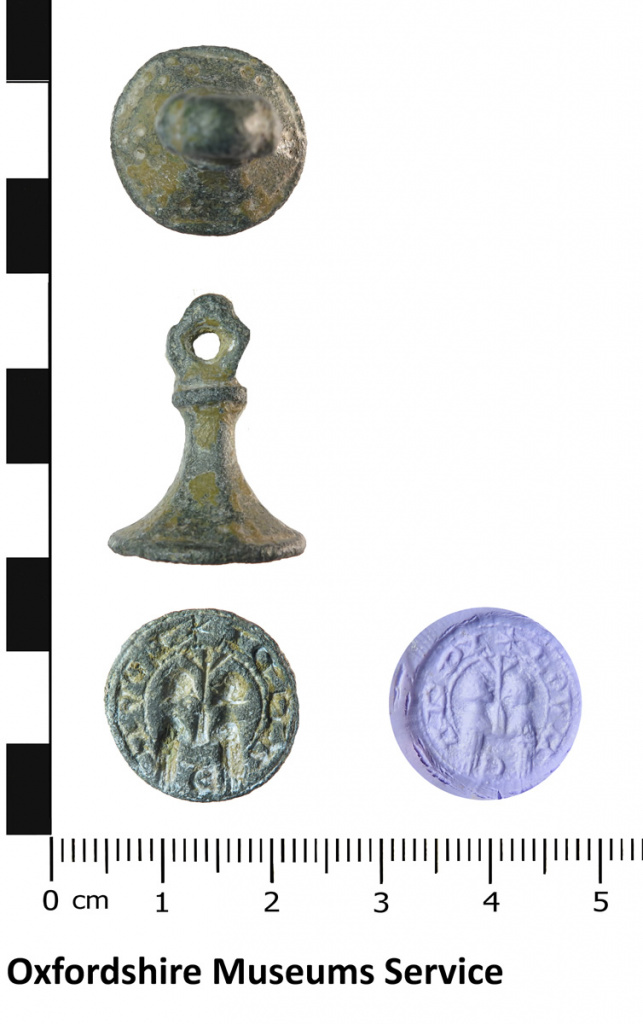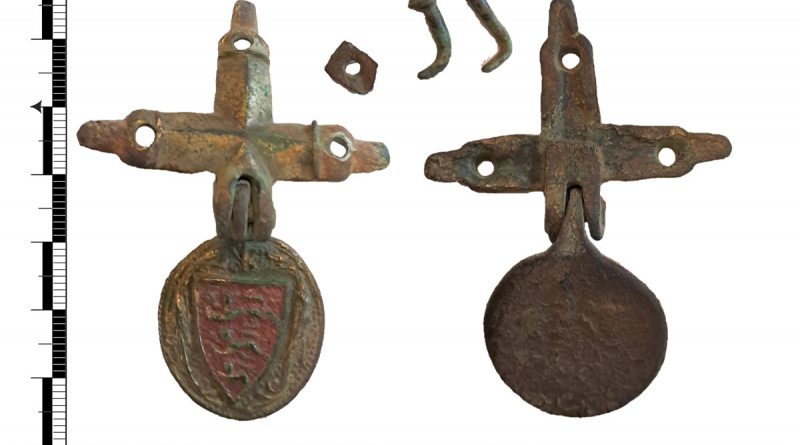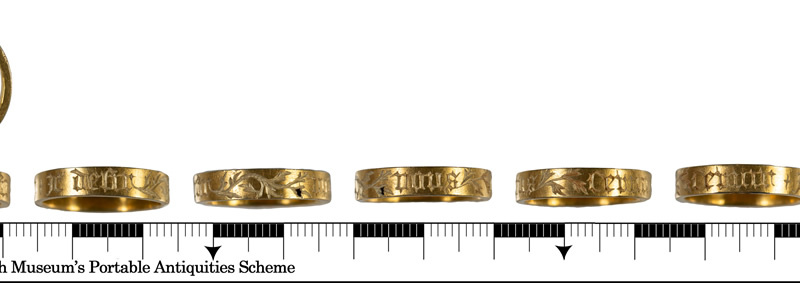PAS Finds (w/e 13/10/23) – Love and Loyalty seal
My selection of the detecting finds recorded at the PAS in the week ended 13 October 20023.
Featured Find
“Love and Loyalty” seal matrix
A 14th century seal matrix depicting a man and women facing each other and holding a book between them. Between them is what the PAS report describes as a “a vertical post and two 45° angled brace supports for a roofing structure“. Possibly, but most seal matrices of this type have a plant or tree between the couples and this could be lower part of a tree. The legend reads “Love Me and I”.
Seal matrices of this type are known as “Love and Loyalty” matrices. They depict a man and woman, usually facing each other, with a design that signifies love. This might be a bird or a plant. The legends are in English and French and normally some variation on “Love Me and I Ye”. The question arises as to what their purpose was.
Love Letter
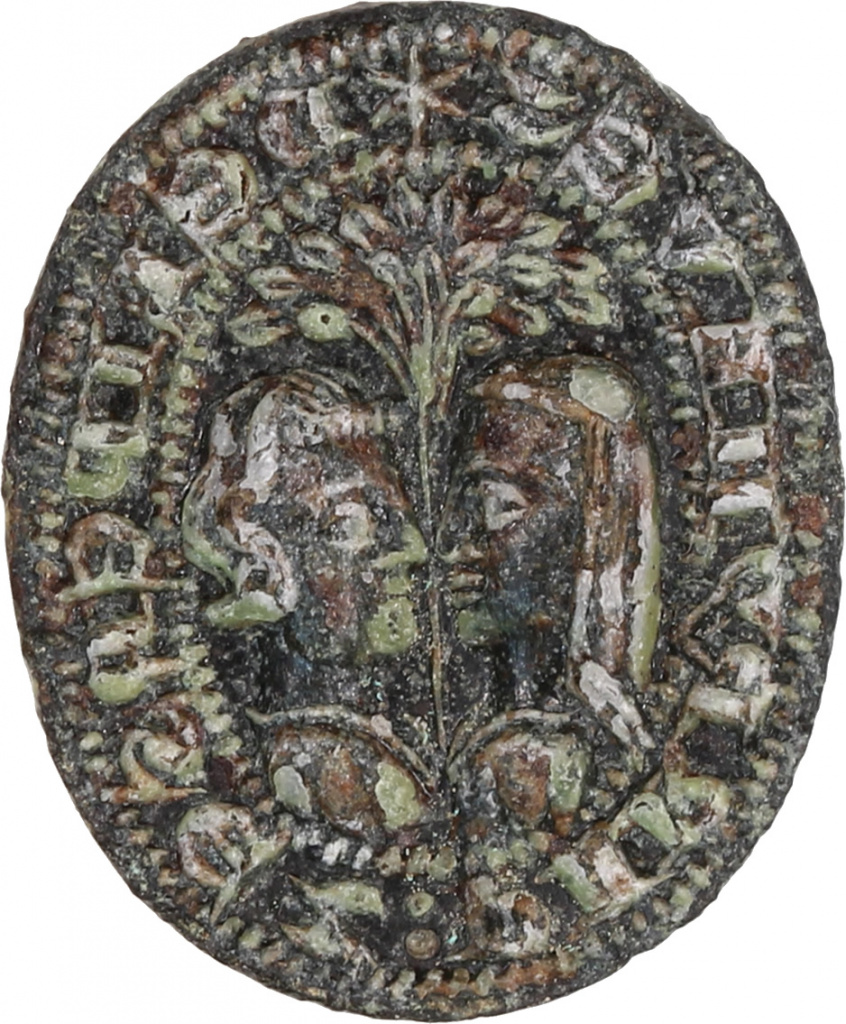
Here’s another example on the PAS database (KENT-C617F2) which shows a spray of flowers between the lovers’ heads. The legend, in French, reads DE LI PENSEZ: PAR KY MAVEZ which has been translated as ‘think of him from whom you have me‘
The PAS report quotes Dr John Cherry: “likely this matrix was to be used by a lover on a love letter to his lady“. That is possible but I have a few issues:
It’s an impersonal matrix which seems at odds with a love letter. It identifies the letter as being a love letter and so couldn’t be used for a secret love. It is, therefore, for an established couple who are separated often enough to need to seal a letter between them. However, the matrix is relatively low quality and impersonal and so not for someone of significant wealth. That all seems a relatively unlikely combination in 14th century England.
A “Couples” seal
A thesis by Alister Harvey Sutherland entitled Non-armorial personal seals and the expression of identity in rural English communities, c. 1175–13491 looked at seal matrix use in two rural communities; Saltfleetby, Lincolnshire and Tanworth, Warwickshire. These were chosen as they have a large number of surviving seal impressions attached to deeds. As Alister’s thesis says, the primary users of non-armorial seals were people of lower status such as peasants, craftsmen, merchants and small landowners. As Tanworth and Saltfleetby were two rural communities, it is unlikely that any of these groups would be writing love letters.
Of the 184 seal impressions available at Tanworth, six depicted two heads facing each other across the a tree. These impressions indicate that they were used, like other impersonal seals, to “sign” legal documents. Alister’s thesis suggested that these seals allowed users to express aspects of their identity. My view is that they are signifying that they are a couple and, by using this matrix, that they are entering into legal obligations as a couple.
The most likely time that the need for a “couples” seal matrix would arise is on marriage. This would tie in with the expressions of love on the matrix. They may have even been a wedding gift.
After writing that last line, I had another look at the seal matrix and it could well be the scene from a marriage ceremony, with the support for the church roof between the couple.

